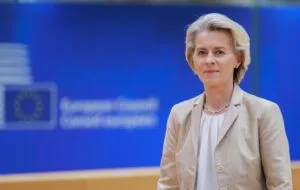Brussels – The legislative journey is over, now the implementation phase begins. With the final green light of the EU Council to the €6 billion Reform and Growth Facility for the Western Balkans, the Union’s new Plan to support the economies of the six partner countries is ready to show the first concrete results right away, as early as in the coming months. “If all goes well, we hope to be able to make a first payment by the summer,” EU Commission spokeswoman for Neighborhood Policy and Enlargement, Ana Pisonero, told the press today (May 7), commenting on the news of the Council’s final approval to the agreement reached with the EU Parliament’s co-legislators a month ago.
At this point, only the formal steps are missing: signing the Regulation establishing the new Instrument, publication in the EU Official Journal, and entry into force (the following day). “Our Western Balkan partners are preparing the Reform Agendas to access funding from the Facility,” the spokeswoman explained, pointing out that the Commission expects them to “submit them once the Regulation enters into force.” The Reform Agendas of each of the six Balkan partners – Albania, Bosnia and Herzegovina, Kosovo, North Macedonia, Montenegro, and Serbia – will define socio-economic and fundamental reforms to be undertaken between 2024 and 2027 to access the funds (€2 billion in grants and €4 billion in soft loans). “The programs will have to be evaluated, approved by the Commission after consultations with member countries,” after which “indicative allocations based on GDP and population can be made available,” Pisonero concluded.
Half of the support through the Growth Plan will come from the Western Balkans Investment Framework (WBIF) in the form of grants and investment loans to support the Reform Agendas and half from loans disbursed directly to partners’ national budgets based on key socio-economic reforms. Payments will be made twice a year “provided that partners meet the qualitative and quantitative phases” of the Agendas (otherwise, the EU may decide to cut off funds). Also considered some perplexities highlighted by the ECA, the Growth Plan for the Western Balkans includes a ‘fundamentals first’ approach, i.e., linking the rule of law, anti-corruption, and fundamental rights with the other two crucial areas of the EU accession process: economic governance and strengthening democratic institutions and public administration reform.To strengthen transparency, it is also envisaged that up-to-date data on final recipients receiving funding in excess of 50 thousand euros cumulatively over a four-year period will have to be made available on a dedicated webpage.
What is the Western Balkans Growth Plan
European Commission President Ursula von der Leyen anticipated the Growth Plan for the Western Balkans and illustrated it to stakeholders during her last fall tour of the region before the official presentation on November 8 in parallel with the publication of the EU Enlargement Package 2023. . “It is something exceptional. We know that the miracle of prosperity comes with access to the Single Market, and we are already starting this process. We are not waiting for the final decision on political accession,” the number one EU executive claimed, outlining the four pillars of a Plan that should “close the economic and social gap” between the EU and the Balkan region and allow “integration on the ground even before they formally enter as member countries.”
The first pillar is economic integration in the Single Market in seven key areas, subject to alignment with EU rules and the opening of relevant sectors to neighboring countries: free movement of goods, free movement of services and workers, access to the Single Euro Payments Area (SEPA), facilitation of road transport, integration and de-carbonization of energy markets, digital single market, and integration in industrial supply chains. The second pillar is internal economic integration through the Common Regional Market (based on EU rules and standards). Brussels estimates that this factor alone could potentially add 10 percent to the economies of the Balkan Six. The third pillar concerns fundamental reforms, which in the Brussels Plan will, on the one hand, support the Western Balkans’ path to EU membership and, on the other, support foreign investment and strengthen regional stability.
Investment is where the fourth pillar of EU financial assistance for reforms for all six partners comes in. Specifically, it is a new €6 billion reform and growth facility for the Western Balkans for 2024-2027, the payments tied to the implementation of agreed socio-economic reforms (just like Next Generation EU for the 27 Member States). At the interim review of the EU Multiannual Financial Framework 2021-2027, the green light was given to the facility consisting of 2 billion euros in grants (ending up in the EU budget without changes to the Commission’s proposal) and 4 billion in concessional loans, the granting of which will first require each of the six countries to submit a reform agenda based on the recommendations of the Enlargement Package and Economic Reform Programs (ERPs).

There is an additional clause for Serbia and Kosovo that they “engage constructively with measurable progress and tangible results in normalizing their relations.” In other words, without progress in the Pristina-Belgrade dialogue, funding under the Plan will remain stalled – or lost. The same is true for Bosnia and Herzegovina in the event of failure to implement crucial reforms: “Resources will be redistributed to other countries that are able to do so. It is a strong incentive to move forward in an active way,” she warned on her November 1 stop in Sarajevo.
Find more insights on the Balkan region in the BarBalkans newsletter hosted by Eunews
English version by the Translation Service of Withub






